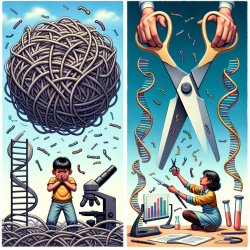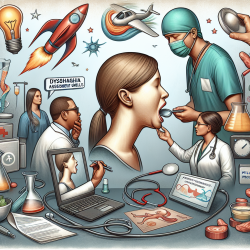Introduction
In the field of speech-language pathology, the integration of cutting-edge technologies such as CRISPR/Cas can potentially revolutionize therapeutic approaches and outcomes. The research article "CRISPR/Cas: A powerful tool for gene function study and crop improvement" highlights the transformative potential of CRISPR/Cas systems in genetic editing. While the primary focus of the article is on crop improvement, the underlying principles of CRISPR/Cas can be applied to human genetics and, by extension, speech-language pathology.
Understanding CRISPR/Cas
CRISPR/Cas systems are a family of DNA sequences found within the genomes of prokaryotic organisms such as bacteria. These sequences are derived from DNA fragments of viruses that have previously infected the prokaryote and are used to detect and destroy DNA from similar viruses during subsequent infections. This mechanism is the basis for CRISPR/Cas gene editing technology, which allows for precise modifications of specific DNA sequences.
Applications in Speech-Language Pathology
While CRISPR/Cas is predominantly utilized in agricultural biotechnology, its potential applications in medical fields, including speech-language pathology, are vast. Here are some ways CRISPR/Cas can be integrated into speech-language pathology:
- Genetic Disorders: Many speech and language disorders have a genetic component. CRISPR/Cas can be used to identify and potentially correct genetic mutations that contribute to these disorders.
- Neurological Research: By understanding the genetic basis of neurological functions related to speech and language, CRISPR/Cas can aid in developing targeted therapies for conditions such as autism spectrum disorders and developmental language disorders.
- Personalized Medicine: The precision of CRISPR/Cas allows for personalized treatment plans based on an individual's genetic makeup, enhancing the effectiveness of speech therapy interventions.
Encouraging Further Research
While the potential of CRISPR/Cas in speech-language pathology is promising, it is crucial for practitioners to stay informed about the latest research and advancements. Engaging in continuous education and collaborating with geneticists can provide valuable insights into how CRISPR/Cas can be effectively utilized in clinical practice.
Conclusion
CRISPR/Cas represents a significant advancement in genetic editing technology, with the potential to impact various fields, including speech-language pathology. By understanding and integrating these technologies, practitioners can enhance therapeutic outcomes for children with speech and language disorders.
To read the original research paper, please follow this link: CRISPR/Cas: A powerful tool for gene function study and crop improvement.










